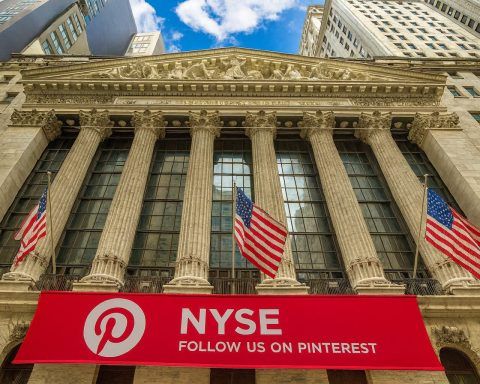On 17 November 2025, stories from Mexico City to Beijing, Toronto, Bengaluru and Guangzhou show Generation Z pulling the world in new directions — from street protests and youth diplomacy to holiday debt, wellness obsessions and safer social media. [1]
Gen Z on the streets: Mexico’s youth-led protests go global
In Mexico, a weekend of demonstrations has been branded “Gen Z protests” by local and international media, marking the latest chapter in a year of youth-led movements. A youth collective called Generation Z Mexico turned an online manifesto into marches in at least 50 cities, with the largest crowds converging on Mexico City’s National Palace, the seat of President Claudia Sheinbaum. [2]
The immediate spark was the 1 November assassination of Uruapan mayor Carlos Alberto Manzo Rodríguez, known for challenging drug cartels and pleading for federal help. His killing, following other political assassinations in Michoacán, has become a symbol of broader anger over crime, impunity and corruption. Protesters used Gen Z’s native tools — social media coordination, digital art and viral symbols — to mobilise far beyond student circles. [3]
Reports describe mostly peaceful daytime rallies but tense nighttime clashes near the National Palace. Hooded protesters pulled down metal barriers; riot police responded with shields and tear gas. Around 120 people were injured, including about 100 police officers, and roughly 20 protesters were arrested, according to local officials quoted in Mexican and international outlets. [4]
Pop culture as a protest language
One of the most striking images from Mexico City was a flag featuring a grinning skull in a straw hat — not a traditional political emblem but the Jolly Roger from the Japanese manga One Piece. Nepali and international coverage note that the “Straw Hat” flag, associated in the story with defiance against an oppressive world government, has quietly become a global youth protest icon, appearing in movements across Indonesia, the Philippines, Nepal and even Paris before emerging in Mexico’s Gen Z-led marches. [5]
For many young protesters, the flag compresses a complex agenda — resistance to corruption and authoritarianism, belief in chosen family and shared adventure — into a single piece of pop culture. It’s a reminder that Gen Z often speaks politics in the language of memes, fandom and shared fictional universes, without seeing that as any less serious than traditional slogans.
Gen Z as diplomats: youth envoys between China and Europe
If Mexico shows Gen Z in confrontation with the state, Beijing offers a very different image: Gen Z as bridge-builders between rival blocs. At the China–Europe Youth Dialogue 2025, held today in the Chinese capital, 61 Gen Z representatives from 30 European countries joined about 60 Chinese students and young scholars to discuss “China–Europe Relations in the Next 50 Years.” [6]
Chinese officials framed young people as “the best envoys for breaking down cognitive barriers,” stressing that openness and inclusiveness can counter suspicion built up over decades of geopolitical competition. The gathering, hosted by the Chinese Academy of Social Sciences, highlights how both sides see youth diplomacy as a long-term investment: today’s students will be tomorrow’s policymakers, founders and voters, with the power to soften or harden the relationship. [7]
For Gen Z, whose lives have been defined by global platforms and transnational culture, this kind of forum feels almost natural. Many grew up gaming with strangers overseas, watching European football from Beijing bedrooms or streaming K‑pop in Berlin. The Beijing dialogue simply turns that instinctive cross-border connectivity into explicit diplomatic work.
Gen Z money: spending big, stressed out and still chasing security
In Canada, a new survey from CPA Canada released today suggests younger generations are driving a more aggressive — and risky — holiday spending season. Among Canadians aged 18–34, 40% plan to spend more than last year, and 58% expect to lean on credit to pay for it. Over half (56%) say they feel more stressed about holiday costs than a year ago. [8]
Older Canadians are approaching the season quite differently: roughly two-thirds of those 55+ intend to keep spending flat, and about 70% say they’ll fund purchases from savings or regular income rather than debt. Even though gift budgets across all age groups have ticked up to an average of C$661 — a 10% year-on-year rise — the biggest jump is among Gen Z and younger millennials, who prioritise gifts and entertaining over donations or travel. [9]
Zooming out, the financial picture for Gen Z is complicated. A Belgian cut of Deloitte’s 2025 Gen Z and Millennial Survey finds that only 8% of Belgian Gen Zs consider climbing the corporate ladder their main ambition; instead, they prioritise financial security, job stability and work–life balance. Yet 46% report living paycheck to paycheck despite full-time work, and around 40% say they feel stressed or anxious most of the time at work. [10]
Globally, Deloitte’s broader 2025 survey of more than 23,000 Gen Zs and millennials paints a similar picture: they want what the firm calls a “trifecta” of money, meaning and well-being. Almost nine in 10 Gen Zs say a sense of purpose is important to job satisfaction, but they don’t necessarily equate that with traditional leadership roles or corner offices. [11]
Meanwhile, new research from Randstad shows Gen Z’s average stint in a job during their first five working years is just 1.1 years — not because they’re careless, the report argues, but because they’re “growth-hunting” amid a sharp drop in entry-level roles. One in three Gen Z workers plans to change jobs in the next year, and three-quarters use AI to upskill, illustrating a generation that is both financially anxious and relentlessly opportunistic. [12]
Put together, today’s data points to a paradox: Gen Z is willing to swipe the credit card harder than older cohorts for experiences and generosity, even as many feel they’re running on financial fumes.
Health, boundaries and the pursuit of well‑being
If money feels precarious, health is becoming non‑negotiable. Fresh findings from the ET Snapchat Gen Z Index, released in India today, show that 80% of Gen Z respondents say fitness and healthy habits are now a daily part of life. Rather than treating wellness as a side project, they are folding it into their identities. [13]
The study, powered by Kantar and based on urban Gen Z across Indian metros and Tier‑1 cities, describes a generation logging workouts, tracking steps and synchronising food with mood and productivity. Fitness apps, wearables and social challenges aren’t just tech toys — they’re the infrastructure of Gen Z’s everyday routine, linking physical movement with mental balance. [14]
This obsession with holistic well-being echoes the workplace data. Deloitte’s global survey finds that Gen Zs who report positive mental health are far more likely to feel their work allows them to make a meaningful contribution to society than those who report poor mental well-being, underlining how mental health, purpose and career choices are tangled together. [15]
On the cultural side, an opinion piece published today in India Today by Gen Z journalist Deepthi Rao pushes back against the idea that her generation is “killing” work, love or commitment. Instead, she argues, Gen Z is adapting: treating work as a means to live rather than worship, setting boundaries to avoid burnout and being deliberate — rather than indecisive — in politics and relationships. Memes and online humour, she writes, are less a personality type than a coping mechanism in an overstimulating world. [16]
For older generations puzzled by Gen Z’s insistence on mental health days and flexible hours, today’s stories offer a clue: when your finances feel fragile and the news cycle never stops, protecting your headspace and your body can feel like the only solid investment.
Platforms and publishers pivot to Gen Z audiences
It’s not just employers trying to catch up. Today also brings two very different attempts to court Gen Z attention — one from a news organisation, another from a social app.
In India, media outlet Newslaundry has published a report on how to engage Gen Z news consumers, based on a Google–Kantar study, Reimagining News for Gen Z, presented at The Media Rumble 2025 in Bengaluru. The research finds that Gen Z discovers news primarily via social and video platforms, yet still places significant trust in established publishers. To reach them, newsrooms are urged to create more visual and interactive storytelling, embrace local languages and experiment with generative AI tools without abandoning core editorial values. [17]
At the other end of the media spectrum, social discovery app Yubo has announced it is officially becoming an 18+ platform, raising its minimum age to 18 from 1 November 2025. The company says users aged 18 and over already make up the majority of its global base, and that an in‑app survey found 92% of respondents preferred Yubo to be a young‑adult‑only space. [18]
Yubo presents this as the natural “growing up” of a platform that launched a decade ago for teens and has aged alongside its users. Behind the scenes, the move is backed by stringent age‑assurance systems: facial age estimation at sign‑up, manual ID checks by safety teams where necessary, and automated tools that flag suspected age or policy violations. The shift has been gradual, with accounts of 13–15‑year‑olds and then 16–17‑year‑olds deactivated over the course of 2025, and young users invited to return at 18. [19]
Interestingly, this platform pivot intersects with broader regulatory pressure — such as upcoming rules in Australia that will bar many platforms from hosting under‑16s — and with Gen Z’s own stated preference for safer, more authentic online spaces. [20]
In both newsrooms and social apps, the message is similar: if you want Gen Z’s time, you’ll have to meet them where they already are (mobile, visual, social) and prove you can be trusted.
Brands betting on hyper‑local culture and authenticity
Marketers, predictably, are never far behind. In Guangzhou, Nike is taking a decidedly un‑corporate approach to winning over Chinese Gen Z. Instead of a flashy billboard campaign, the brand opened a pop‑up soup shop, 粤菜松苑 (Cantonese Songyuan), on Ersha Island — a popular running spot — where Olympic sprinter Su Bingtian serves traditional herbal soup to local runners. [21]
Coverage of the pop‑up describes it as a showcase of “hyper‑local, experiential marketing”: rather than shouting at Gen Z through ads, Nike embeds itself in a familiar ritual (a warm bowl of soup after a run) and a beloved local athlete. It’s brand building as community building, speaking to a generation sceptical of polished slogans but hungry for real‑world experiences that feel made for them. [22]
In India, PepsiCo is preparing to tackle the “Gen Z conundrum” head‑on at this year’s Pitch BrandTalk conference. Tarun Bhagat, the company’s CMO for its India business, is set to deliver a session on “The New Rules of Relevance” for Gen Z, as part of a programme themed around building connections in a “BANI” world — brittle, anxious, non‑linear and incomprehensible. Organisers say the focus will be on how brands can stay relevant, build trust and create authentic engagement when consumer expectations shift faster than ever. [23]
Taken together with the news and platform stories above, a pattern emerges: Gen Z doesn’t just want brands to talk at them. They reward those who show up in physical spaces they care about, speak their cultural language, protect their safety online and respect their intelligence.
What November 17, 2025 really tells us about Gen Z
Today’s Gen Z headlines span continents and sectors, but they rhyme.
- In Mexico, young people are at the heart of a national reckoning over violence and impunity, blending anime flags with hard political demands. [24]
- In Beijing, they are invited to imagine 50 years of China–Europe relations, treated as future shapers rather than passive subjects. [25]
- In Canada and Belgium, they are splurging on gifts while living paycheck to paycheck, prioritising security and purpose over titles even as they cycle rapidly through jobs and train themselves on AI. [26]
- In India, they are building fitness into lifestyle and pushing workplaces and families to accept clearer boundaries around mental health and meaning. [27]
- Online, they are simultaneously the audience newsrooms are desperate to understand and the community pushing social platforms like Yubo to “grow up” and enforce stronger safety norms. [28]
None of these stories on their own “explain” Gen Z — as Deepthi Rao points out in her essay, no think piece can. But together, the day’s headlines suggest a generation that is:
- Politically serious but culturally playful, unafraid to march under an anime flag while demanding accountability from presidents.
- Financially stretched yet aspirational, willing to carry more holiday debt even as they hunt for stability, side hustles and growth.
- Wellness‑driven and boundary‑setting, treating fitness, therapy and time offline as essential infrastructure, not luxuries.
- Sceptical of institutions but not disengaged, forcing governments, employers, brands and platforms to adapt rather than simply tuning out.
For editors, policymakers, marketers and product builders tracking Gen Z, November 17, 2025 offers a clear takeaway: this generation is no longer “the future.” They’re already rewriting how power, money, culture and technology work — and anyone who still treats them as a niche audience is already behind.
References
1. www.moneycontrol.com, 2. www.moneycontrol.com, 3. www.moneycontrol.com, 4. www.moneycontrol.com, 5. english.nepalnews.com, 6. english.news.cn, 7. english.news.cn, 8. www.globenewswire.com, 9. www.globenewswire.com, 10. www.deloitte.com, 11. www.deloitte.com, 12. www.randstad.com, 13. m.economictimes.com, 14. m.economictimes.com, 15. www.deloitte.com, 16. www.indiatoday.in, 17. www.newslaundry.com, 18. www.prnewswire.com, 19. www.prnewswire.com, 20. www.esafety.gov.au, 21. radii.co, 22. radii.co, 23. www.exchange4media.com, 24. www.moneycontrol.com, 25. english.news.cn, 26. www.globenewswire.com, 27. m.economictimes.com, 28. www.newslaundry.com










